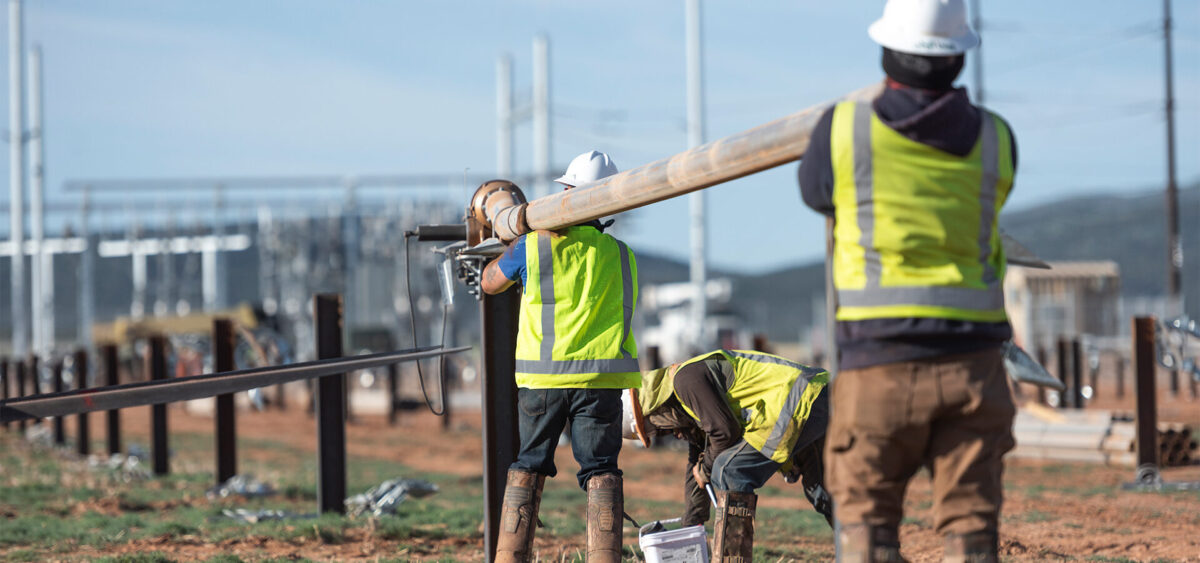From pv magazine Special Edition
George Hershman began his four-year tenure as executive chair of the board of directors at the Solar Energy Industries Association (SEIA) in early 2020 and has served through the sudden onset of the Covid-19 pandemic, the creation of a “Solar + Decade” target, and the passage of the Inflation Reduction Act (IRA).
Despite a suddenly changed world, the industry persisted through the pandemic, and by 2021 set the “Solar + Decade” target of solar contributing 30% of U.S. electricity generation. A year later, the IRA was passed, carrying a record $369 billion in spending for energy and climate, and creating a path for SEIA’s vision to become reality. Hershman offered his perspective a year following this passage in a conversation with pv magazine USA, and why IRA is unique.
“We’ve often dealt with the buy side, through continued tax credits for projects. That really helps installers and developers and end users,” said Hershman. “But we really never dealt with how we are going to get product, the supply side. I think the IRA did a great job with supporting the supply side to ensure we build the manufacturing supply chain in the U.S. that we all want to be able to deploy.”
Direct Pay
pv magazine USA asked Hershman about adjustments or clarifications he would like to see made to IRA, the Direct Pay provision came to mind.
“I think Direct Pay applicability should have been much broader. The fact that Direct Pay went forward to municipalities and nontaxpaying entities was great,” he said.
However, Hershman warns that commercial tax appetite will limit the efficacy of this provision. He said that larger projects may gobble up tax equity, squeezing out smaller projects from accessing the benefit. This is largely due to the fact that it is more appealing for a tax credit investor to write a few large checks rather than many small ones.
Hershman said that there is room for revisiting this problem, but by-and-large, he is pleased with many of the outcomes of the IRA and its outlook for solar.
As for political threats to IRA, there have been attempts to overturn it or strip core provisions, but Hershman said that early and continued success will de-fang any attempts to throw out the landmark industrial policy.
“We want to win the win,” he said. “We all want to be in a position where we can cut ribbons and put shovels in the ground and say the IRA brought this project to your community. A lot of these projects are in Red counties and Red districts. It’s much harder to fight against a bill that’s bringing jobs and property tax revenues to your district.”
Supply
While there is much to celebrate about IRA, there are bubbling concerns about the nation having a steady supply of solar components to meet deployment demand. Enforcement of the Uyghur Forced Labor Prevention Act (UFLPA) and the looming temporary pause of antidumping and countervailing duty (AD/CVD) laws, which will lift in summer 2024, have cast doubts on the U.S. having enough supply.
While the IRA’s manufacturing provisions are making significant additions to the nation’s solar supply chain, Hershman recognizes that we can’t build a complete domestic supply chain overnight.
As for the AD/CVD waiver, Hershman said he is hoping the U.S. will take a more strategic view of trade laws. He sees it as highly unlikely that a blanket, long-term extension of the tariff pause will occur.
As for AD/CVD enforcement, Hershman pointed to an opportunity to reward the many foreign businesses which are now meaningfully investing in U.S. manufacturing sites, and how this investment could be further encouraged in tariff law structuring.

Image: LinkedIn
“It seems like we’re not appropriately acknowledging the investments and rewarding the good players. If you don’t invest here, you don’t get a waiver, there is no free ride into this market without significant AD/CVD penalties. But, if you do choose to invest, there should be some sort of reward there.”
Foreign companies investing in a U.S. manufacturing footprint are investing hundreds of millions of dollars. In the first eight months alone post-IRA, over $150 billion in manufacturing investments were announced across over 46 sites. Many of the largest announcements came from companies like Qcells, Canadian Solar, and other foreign companies.
Hershman said we all stand to benefit to see these businesses succeed. Hershman said this kind of approach would be a strong incentive for driving even more investment on U.S. shores.
“If I knew that I could continue to supply the U.S., but the only way I could is if I invested and opened a facility here, that would seem to be a good incentive.”
As we take the first steps into the Solar + Decade, Hershman reflected on the unique couple of years behind us, which presented unprecedented challenges.
“We weathered it very well, and we are coming out of Covid stronger as an association, stronger as an industry, and got a lot of really good work done during a really difficult time,” he concluded.
This content is protected by copyright and may not be reused. If you want to cooperate with us and would like to reuse some of our content, please contact: editors@pv-magazine.com.









By submitting this form you agree to pv magazine using your data for the purposes of publishing your comment.
Your personal data will only be disclosed or otherwise transmitted to third parties for the purposes of spam filtering or if this is necessary for technical maintenance of the website. Any other transfer to third parties will not take place unless this is justified on the basis of applicable data protection regulations or if pv magazine is legally obliged to do so.
You may revoke this consent at any time with effect for the future, in which case your personal data will be deleted immediately. Otherwise, your data will be deleted if pv magazine has processed your request or the purpose of data storage is fulfilled.
Further information on data privacy can be found in our Data Protection Policy.